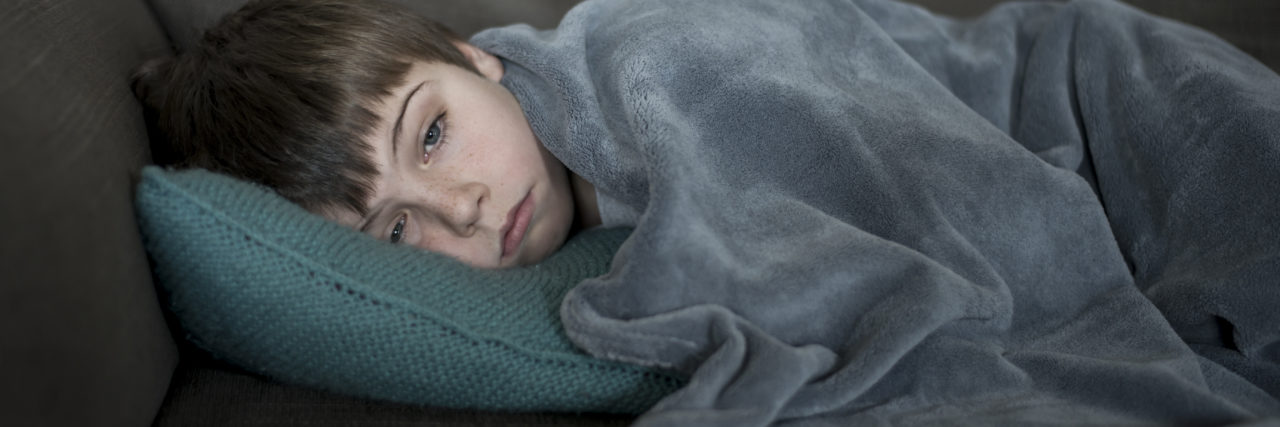Just a few days before the Christmas holiday, my 4-year-old and 8-year-old children were buzzing with excitement. They begged us to have sleepovers in each other’s rooms, and we happily obliged, seeing their joy earlier in the year during the pandemic when they were looking for new adventures in an uncertain time. My husband turned back on the video baby monitors we’ve continued to use well out of infanthood, “just in case they decide to cause shenanigans in the middle of the night.”
At 5:30 a.m. just three days before Christmas, something woke us up. “Was it the dog? Was our pandemic puppy barking? If it is, I hope Mike will get her and let her out so I can get some additional uninterrupted sleep,” I thought. And, then we both heard a jarring rhythmic, clicking and gagging noise from the monitor. We both got up quickly, heading into our daughter’s room. Our son had been sleeping on the floor, his choice despite our many efforts to have him sleep in his bed, and we caught him unresponsive in the middle of a tonic-clonic seizure.
Immediately, like a well-orchestrated symphony, Mike ran to get his phone to call 911, I made sure our son was on his side, as his fixed gaze turned my stomach, and I checked his breathing and vitals “…good… he’s breathing… good… he’s not turning blue… is this really happening? I need to get this on video.” I grabbed my phone as my husband whisked our 4-year-old, who had woken up thinking her brother was having hiccups, to our bedroom. I captured roughly 9 seconds, which was plenty, and continued to monitor and pray for what seemed like eternity for the seizure to stop.
Shortly after it did, lasting about 2-3 minutes, I asked our son to give me a thumbs-up, and he quickly did. A few minutes later, he was able to verbalize answers to questions, and was slowly coming out of the fog. Just as he answered, three EMTs were entering my daughter’s bedroom, responding in less than five minutes to our house, as my husband threw a mask at me to put on.
By the time they got him in the ambulance, our son was cracking jokes, wondering why it was so cold outside, and exclaiming how excited he was to ride in an ambulance. My heart was pounding as I climbed into the back of the ambulance, on the way to the trusted hospital that saved his life in 2012.
When Max was born in 2012 with HIE, he was a kick count save, but very very ill. He was transferred to the large high-level NICU in downtown Detroit, and spent roughly three weeks there, where he, gratefully, never experienced neonatal seizures which are quite common in HIE. When we were told of the extent of injury they saw on the MRI, and long-term outcome possibilities were mentioned, we knew he was at risk for developing epilepsy. But each passing year he didn’t, and our neurologist told us this was good news and each year seizure-free meant it was less likely he would ever develop them.
In my work with Hope for HIE over the last two years, I have represented the organization in several epilepsy-focused groups, despite my own child never experiencing a seizure at that point. I learned about infantile spasms and the connection to HIE, saw friends whose children were previously seizure-free develop them at ages 4, 6, 8… and I learned about seizure first aid, and the importance of capturing seizures on video for medical evaluation.
The reason my husband and I were able to keep calm and succinctly implement these seizure first aid best practices, is because of the community education that comes from connecting with over 6,000 families worldwide. Currently, we are working to develop more seizure and epilepsy-related educational programs for our community. I want everyone who has to go through this terrifying experience to feel empowered and supported like we did in this most vulnerable moment for our beloved child.
We don’t know what this next chapter will bring, but we know we will once again find the best ways to support our child through this new plot twist because of Hope for HIE.
Getty image by jacktheflipper.

